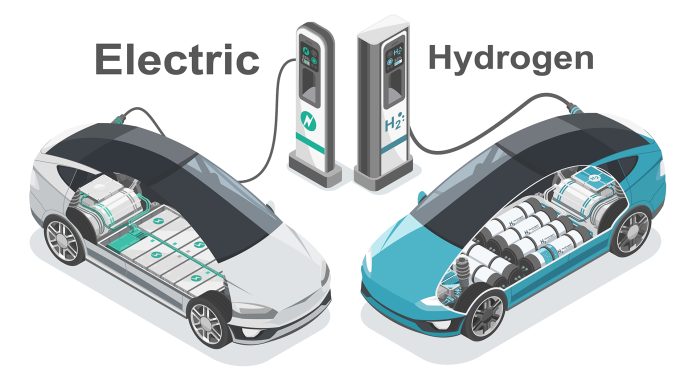The rise of electric vehicles (EVs) is one of the most significant developments in the global transportation sector. With increasing concerns about climate change, air pollution, and fossil fuel dependency, electric vehicles offer an environmentally friendly alternative to traditional gasoline and diesel-powered cars. However, as the adoption of EVs accelerates, they are also driving significant changes in the demand for energy. From shifting patterns in electricity consumption to potential impacts on grid infrastructure, EVs are reshaping the way energy is produced, stored, and consumed.
In this article, we will explore how electric vehicles are changing the demand for energy, the challenges this shift poses, and the opportunities it creates for the energy sector.
The Growing Demand for Electric Vehicles
Electric vehicles have seen a rapid increase in popularity over the past decade. According to recent reports, global EV sales have surged, with millions of electric vehicles now on the roads in major markets like the United States, China, and Europe. Factors such as government incentives, advancements in battery technology, increasing consumer awareness of environmental issues, and rising fuel costs are driving this shift away from traditional internal combustion engine (ICE) vehicles.
1. Electric Vehicle Sales Growth
In 2023, global EV sales exceeded 10 million units for the first time, with electric cars now accounting for a significant share of the automotive market. Industry forecasts suggest that electric vehicles will make up a larger percentage of the global car market in the coming years, with some predictions estimating that EVs will account for 50% or more of global car sales by 2030.
2. Government Policies and Regulations
Governments around the world are increasingly implementing stricter emissions regulations and offering incentives to encourage the adoption of electric vehicles. These include subsidies for purchasing EVs, tax incentives for EV manufacturers, and stricter fuel efficiency standards for automakers. As a result, the shift toward EVs is not just a consumer choice but is also being driven by government policy.
How Electric Vehicles Are Impacting Energy Demand
The widespread adoption of electric vehicles is leading to changes in how and when energy is consumed. While EVs have the potential to reduce dependence on oil and gas, they introduce new complexities in electricity demand. Below, we explore some of the key ways in which EVs are influencing energy consumption:
1. Increased Demand for Electricity
As more people switch to electric vehicles, the overall demand for electricity is expected to increase. EVs require electricity to charge their batteries, and as the number of EVs on the road grows, so will the amount of electricity needed to power them.
Impact on Electricity Consumption:
- Residential Charging: EV owners typically charge their vehicles at home, often using standard electrical outlets or dedicated home charging stations. This leads to increased residential electricity consumption, particularly in the evening when many people return home from work and plug in their vehicles.
- Public Charging Stations: In addition to home charging, public charging infrastructure is expanding rapidly. Fast-charging stations, located in cities, shopping centers, highways, and other public places, require significant amounts of power to charge EVs quickly. This infrastructure growth will add additional demand to the grid, especially in urban areas.
- Commercial Fleets: Businesses with large fleets of electric vehicles, such as delivery services and ride-hailing companies, are also contributing to the growing demand for electricity. Commercial fleets tend to charge vehicles overnight, which could lead to significant increases in demand during off-peak hours.
2. Time-of-Use Charging and Peak Demand
While the adoption of electric vehicles increases overall electricity demand, it also introduces new challenges for grid management, particularly related to peak demand periods.
Challenges:
- Evening Charging Peaks: As many people charge their EVs at night, this can coincide with periods of high electricity demand, such as when people return home from work and use energy-intensive appliances like heating, air conditioning, or cooking devices. This creates the potential for spikes in demand that could strain the grid, especially in areas where electricity demand is already high during certain hours.
- Seasonal Variability: In regions where EV adoption grows rapidly, seasonal variability in energy demand could become more pronounced. For example, winter months may see increased charging demand in colder climates when people are more likely to use their vehicles for travel, while summer months might bring greater air conditioning use alongside increased EV charging.
3. Grid Infrastructure Strain
The need to support EVs will place additional pressure on the existing electricity grid infrastructure. The increased electricity demand, coupled with the potential for new charging stations and the growing adoption of EVs, means that many regions will need to make significant upgrades to their grid systems.
Key Considerations for Grid Infrastructure:
- Grid Modernization: Utilities may need to invest in smart grid technology to better manage electricity distribution, balancing supply and demand more efficiently. Smart grids enable real-time monitoring and automated responses to changes in demand, which is essential as more EVs are integrated into the energy system.
- Energy Storage Solutions: To cope with the fluctuating demands of EV charging, utilities will need to consider energy storage solutions that allow for better management of peak electricity loads. Battery storage systems could help store excess energy during off-peak hours and release it during periods of high demand, thereby helping to stabilize the grid.
4. Renewable Energy Integration
Electric vehicles have the potential to support the integration of renewable energy sources into the grid. As more countries transition to cleaner energy solutions, the pairing of EVs with renewable sources of power—such as solar and wind—could help reduce the overall carbon footprint of both transportation and energy sectors.
Opportunities for Renewable Energy:
- Solar Power and EV Charging: Many EV owners are already installing solar panels on their homes to charge their vehicles using clean, renewable energy. Solar-powered charging stations are also becoming more common in public spaces, further promoting the adoption of sustainable energy sources.
- Vehicle-to-Grid (V2G) Technology: In the future, electric vehicles could play an active role in energy generation and distribution. Through vehicle-to-grid (V2G) technology, EV batteries could be used to store excess energy generated by renewable sources and feed it back into the grid during periods of high demand. This would help to stabilize the grid and reduce reliance on fossil fuels.
5. Electrification of Other Sectors
As electric vehicles become more mainstream, their adoption could pave the way for the electrification of other sectors of the economy, such as public transportation, trucks, and even residential heating. This trend could further accelerate the demand for electricity and transform the broader energy landscape.
Expanding the Impact:
- Electric Buses and Trucks: The electrification of public transportation and logistics vehicles, such as buses and freight trucks, could result in additional electricity demand. Many cities around the world are already introducing electric buses, and large companies like Amazon are investing in electric delivery trucks.
- Heating and Industrial Electrification: In addition to transportation, there is a push to electrify other aspects of society, such as home heating (via electric heat pumps) and industrial processes. The expansion of electrification could lead to further increases in energy demand.
Opportunities for Energy Providers
While the rise of electric vehicles presents new challenges for the energy sector, it also creates opportunities for energy providers to adapt and innovate:
1. Flexible Pricing Models
Utilities can develop flexible pricing models to encourage off-peak charging and reduce grid strain. For example, time-of-use (TOU) pricing could offer lower rates during non-peak hours (like late at night) and higher rates during peak hours. This would incentivize EV owners to charge their vehicles when demand on the grid is lower, helping to balance energy consumption.
2. Integration with Smart Grids
The widespread use of electric vehicles presents an opportunity for utilities to invest in smart grid technology. This would allow for real-time monitoring of energy usage, dynamic pricing, and more efficient energy distribution. Smart grids could also allow for better management of distributed energy resources, such as solar panels and EV batteries.
3. Energy Storage and Battery Solutions
Energy storage solutions, such as large-scale battery storage systems, can help mitigate the challenges of fluctuating demand. These systems can store energy during low-demand periods and release it when demand peaks, helping to stabilize the grid and reduce the reliance on fossil fuels.
Conclusion
Electric vehicles are not only changing the transportation landscape but are also reshaping the demand for energy. As more consumers adopt EVs, electricity consumption is expected to increase, leading to new challenges for grid management, peak demand, and infrastructure. However, the integration of renewable energy, advancements in smart grid technology, and the potential for vehicle-to-grid solutions offer promising opportunities to balance supply and demand efficiently.
While the rise of electric vehicles introduces new complexities, it also provides an exciting opportunity for energy providers, policymakers, and innovators to work together to build a more sustainable, reliable, and efficient energy system. The transition to EVs is a key component of the global effort to reduce carbon emissions and combat climate change, and it will continue to shape the future of energy for years to come.

